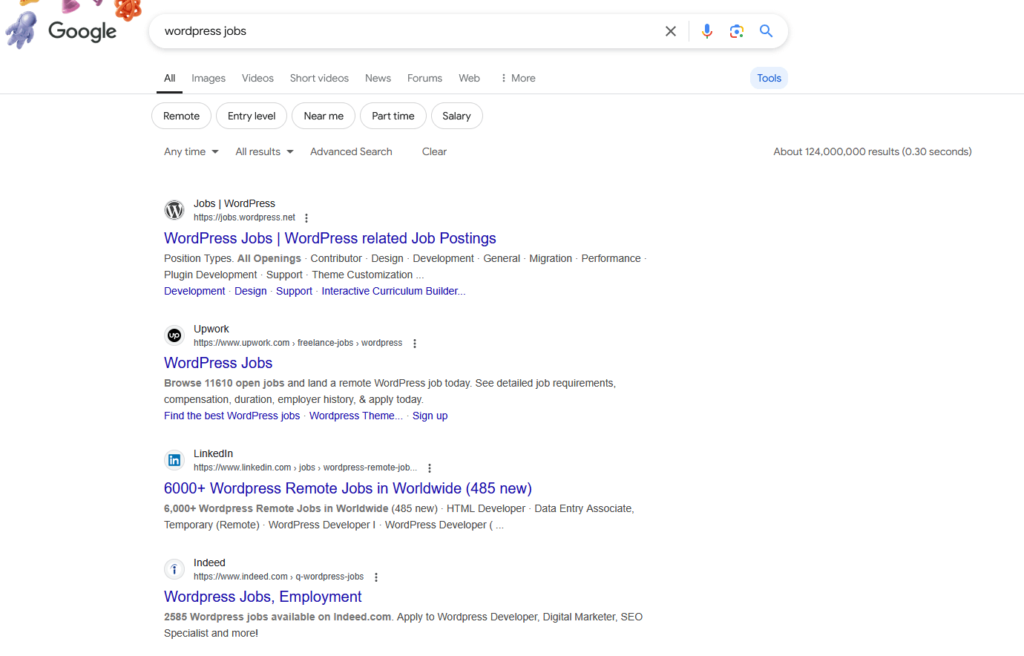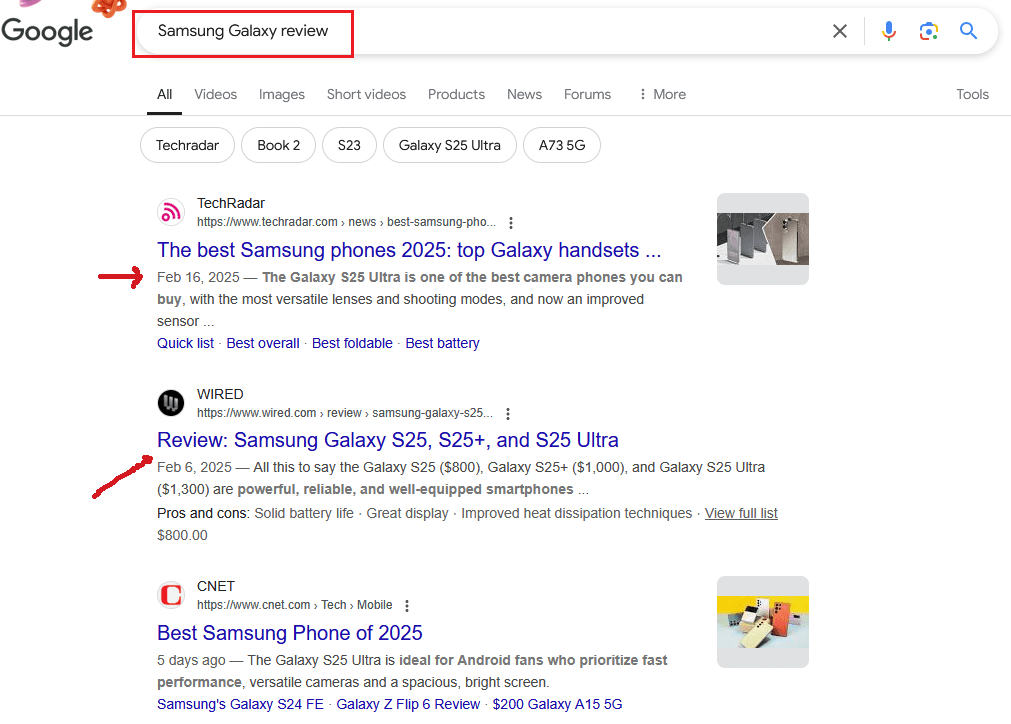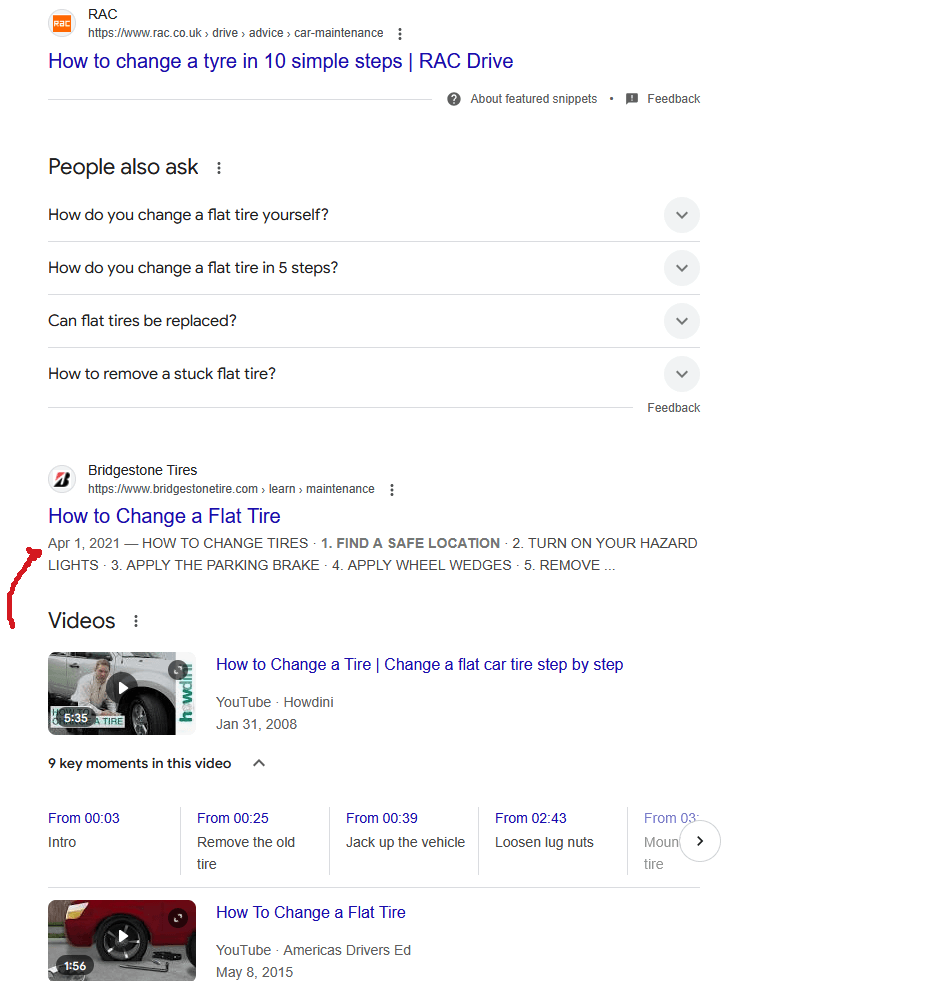After crawling and indexing a webpage, search engines must then decide where to rank its content within Search Engine Results Pages for specific keywords.
The place where a webpage ranks for a specific search term is its keyword ranking.
Since Google dominates more than 90% of the global Search Engine market, and most SEO optimization efforts are catered to it, we will examine how Google ranks webpages.

Most of the other Search Engines follow similar principles and all of them display search results to users.
Google uses a complex algorithm and hundreds of factors to determine the best webpage matches for a search query.
Top Ranking Factors
Below are some of the most important ranking factors that influence a page’s position in search results.
High-Quality Content
Google’s #1 priority is relevant, useful content. Content that is original and well-written, and answers the search intent.
Content should also be longer, in-depth, and provide value to the reader
Keywords inside content should be used naturally, avoiding black hat techniques(e.g. keyword stuffing).
Backlinks
Google sees backlinks (links from other websites) as “votes of trust.”
The number of links isn’t the only factor; they also consider the credibility of the linking sites.
How reputable is the website that we get links from plays a very important role.
For example, if the Wall Street Journal links to our tech blog, rankings will improve.
NOTE: Avoid spammy links (from link farms, PBNs) is equally important.
Keyword Optimization
Google matches search queries with keywords on the webpage.
The title, headers (H1, H2, etc.), meta descriptions, and body text are key places to use these keywords.
Note: To avoid harming rankings, use keywords carefully and don’t overdo it.
Another way to optimize keywords is to use semantic keywords (related words) to improve relevance.
For example: If the main keyword is “managed WordPress hosting” we can also include “Enterprise WordPress hosting” and “fast and secure hosting”.
User Engagement Signals
User Engagement Signals in SEO, are specific actions users take while interacting with a website.
Google hasn’t officially confirmed that user signals directly affect rankings, but an indirect effect is highly probable.
User engagement signals may reflect user engagement and satisfaction.
Such Signals are Click-Through Rate (CTR), time a user spends on page, and bounce rate.
Freshness & Content Updates
According to Google, the timeliness of information is more critical for answering current events questions than for answering general information questions.
So, for time-sensitive searches, fresh content is important. But not so for evergreen subjects.
Topics like news articles, product reviews, and event listings, falls in the former category.
Regarding queries like “Samsung Galaxy review” or “Is Frankfurt stock market open now?” Google considers freshness to be an important factor.

For queries like “Guide to changing a flat tire” or “What is a Web Server?” freshness isn’t considered as an important factor as in the previous cases.

Regardless of our content subject, though, covering new trends in our niche is considered good practice.
Secure Website
HTTPS, or Hypertext Transfer Protocol Secure, is vital for SEO as it improves security, builds trust, and boosts search engine rankings.
Google confirmed that HTTPS improves SEO rankings, giving secure websites an advantage.
The absence of HTTPS results in a scary “Not Secure” warning that may drive visitors away.
Page speed is a ranking factor
A website’s ranking on Google is influenced by page speed. Faster websites rank higher, provide a better user experience, and bring more visitors.
Many factors affect a website’s page speed. These factors consider the speed at which key page content loads.
Google measures speed using three Core Web Vitals:
- Largest Contentful Paint (LCP) – Measures how fast the main content loads (Should be under 2.5s).
- First Input Delay (FID) – Measures how quickly a page responds to user interaction (should be <100ms).
- Cumulative Layout Shift (CLS) – Measures visual stability (avoid layout shifts).
We can check a website’s speed using Google PageSpeed Insights.